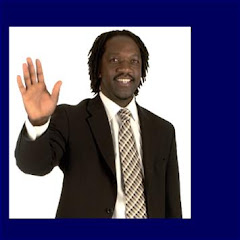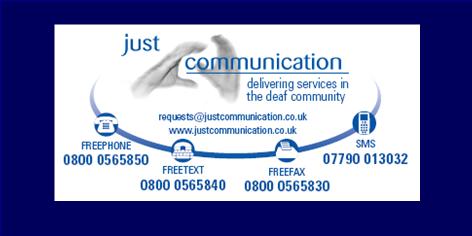'Even the slightest bang could leave Maiya in a world of silence' writes Richard Price for the Daily Mail (27/02/12).
At the end of yet another long and tiring day of filming, Rita Simons cherishes the happy chaos of the evening bathtime ritual. At home, as her boisterous twin daughters Maiya and Jaimee splash around in the water, she can shake off the dust – and inevitable trauma – of the EastEnders set and truly relax. There is only one complicating factor: communication.
Maiya is deaf and cannot wear her hearing aids in the bath. But while Rita and her husband have to raise their voices and make gestures to be understood, the other person in the room has no such problems. Jaimee – who has no hearing loss – can communicate to her sister without saying a word, such is their bond.
We all shout because with the acoustics in the bathroom Maiya can hear a bit,’ says Rita, 34. ‘But she can have her back to Jaimee and she seems to know what she’s saying – I might ask Jaimee to pass the shampoo, and without looking at me Maiya will pass it. She’ll then know when Jaimee is going to pass it back. They also have a funny private sign language that they use together.’
Speaking out about her daughter’s condition is rare for Rita, best known for her role as Roxy Mitchell in the BBC soap. It’s not because she is ashamed, but because she is determined that Maiya’s life should not be defined by her disability. Indeed, without prior knowledge it would be virtually impossible to guess which of the five-year-old twins is deaf, given Maiya’s perfect speech and tendency to burst into song at any moment.
‘It’s very important to us that Maiya gets the chance to lead a normal life,’ says Rita. ‘She goes to a mainstream school and for the children it’s not a big deal – she’s just Maiya. She sits at the front so she can lip-read but otherwise she’s just another kid in the class.’
Yet the picture has not always been so rosy for Rita and her husband, hairdresser Theo Silverston, 35. Maiya was a sickly child who needed special medical care at birth because she was struggling to breathe. A bad case of jaundice led doctors to keep her in hospital for four days before allowing Rita to take her home. This turned out to be the opening salvo in an agonising process.
While standard postnatal checks revealed that Jaimee’s hearing was perfect, Maiya did not respond at all. The clues were there from the start, yet even now, nearly six years on, there are still unanswered questions.
‘Because of a lot of niggling little illnesses it was six months before they confirmed Maiya had hearing loss,’ says Rita. ‘I went into denial at first, buried my head in the sand and suffered from terrible guilt. Now I want to know everything and anything – even the smallest details – so that we can help her.’
Maiya’s medical problems are complex. She suffers from a defect in her vestibular aqueducts, tiny canals in the bones of the inner ear that house the fluid-filled endolymphatic duct and sac along with a vein and an artery. Their function is not totally understood but it is believed they are necessary for transmitting nerve signals from the ear to the brain.
About one in 1,000 babies is born with hearing loss. The condition, enlarged vestibular aqueducts (EVA), affects about one in ten of these children and is thought to be due to a genetic fault. EVAs can be associated with anatomical problems such as Mondini’s deformity, when the cochlea develops incompletely – and this is true of Maiya. It means she is profoundly deaf in her right ear and has severe hearing loss on her left side.
‘We have to guard against bumps on the head for the rest of her life because the slightest bang could damage what little hearing she has and leave her in a world of silence for ever. Even now we still don’t have the whole picture,’ says Rita.
The family is awaiting Maiya’s results on tests for Pendred syndrome. This is an associated condition that causes further deterioration in hearing and affects the functioning of the thyroid gland, which is responsible for creating hormones that balance the metabolism. The sibling of a sufferer has a 25 per cent chance of having the condition, but Jaimee’s tests came back clear.
Crystal Rolfe, audiologist for the charity Action on Hearing Loss, says: ‘EVA can corrupt signals sent to the brain for hearing and balance. It’s really important to have an early diagnosis, as Maiya did, so children can start wearing hearing aids as soon as possible. That way they can learn to speak normally. With further deterioration in hearing a virtual certainty with many of these conditions, quick action is vital.’
Problems with a baby’s hearing may not be immediately apparent in a postnatal check, however, which is why Action on Hearing Loss campaigns for parents to have their children tested again at the first sign of trouble.
By remaining in a mainstream school, Maiya has thrived. Now in her second year, she is one of the most accomplished readers in her class. And thanks to hearing aids which bolster the little hearing she has in her left ear, she is demonstrating an aptitude for acting and singing.
‘Maiya’s ability to speak is incredible, says Rita. ‘Her new thing is to do accents. I heard her playing a game in a perfect Jamaican accent, which she picked up from the TV show Rastamouse.
‘She does a thick Lancashire accent, which is Jane Horrocks from Fifi And The Flowertots. She’s also got a New York accent and some bizarre voice which I think is Romanian – I’m not at all sure where that comes from.
‘It’s incredible when you consider what she’s fighting against. She sings in tune, she’s got great rhythm and she’s a little showgirl.’
Bringing up a deaf child is not without its challenges, however. Last year Rita and Theo were faced with worsening tantrums from Maiya. Invariably the trouble would revolve around getting dressed, with Maiya refusing to put on certain items of clothing because they ‘felt funny’.
Rita says: ‘Maiya would suddenly fly into a rage if you asked her to wear socks. In the end we went to an occupational therapist. It turned out that because Maiya has a diminished sense of hearing, her sense of touch is overly sensitive. It means she gets agitated at the slightest thing.
‘She has balance problems too, which cause her a lot of distress. That’s why she’s constantly on the move, because she only really experiences the problem when she’s standing still.
‘But now we know what we’re dealing with it’s much easier. We do balance exercises, such as standing on one leg, and I’ve bought a bump ball, which she loves being massaged with. It’s a ball covered with bumps and it helps to desensitise her skin.’
Rita and Theo recently decided to learn sign language – a step they resisted initially because they were concerned it would mark Maiya out as different.
‘I don’t want her to miss out on anything because we buried our heads in the sand,’ says Rita. ‘Sign language is a first step. If she needs it I will move her to another school. I’m also looking into the Chicken Shed Theatre company, because I know it does a lot of signing in its productions and that way she will get to integrate with other deaf children.
‘It’s important that Maiya gets to socialise with both the hearing and the deaf communities.’
Cochlear implants – which effectively wire an external microphone directly to the brain, thus providing some hearing – are a possibility, but the procedure is not without controversy and Rita is reluctant to pursue it at the moment.
‘It’s nice to know it’s an option but because Maiya has a degree of hearing, we are cautious. Cochlear implants produce a robotic sound that can be scary for a child who’s been able to hear in the past. And once you bypass the cochlea there’s no going back. It’s irreversible, so if there are any further advances in treatments you can’t take advantage of them.
‘We regard it as a last resort. I have a good friend who is profoundly deaf and her daughter has cochlear implants. I get a lot of advice from her. I know it’s crazy but I still pray for a miracle cure. Of course it’s probably not going to happen, but I’ll never stop dreaming.’
Rita Simons: My Daughter, Deafness and Me, 10.35pm, BBC One, Tuesday 20th March
Monday, 27 February 2012
Subscribe to:
Post Comments (Atom)






No comments:
Post a Comment